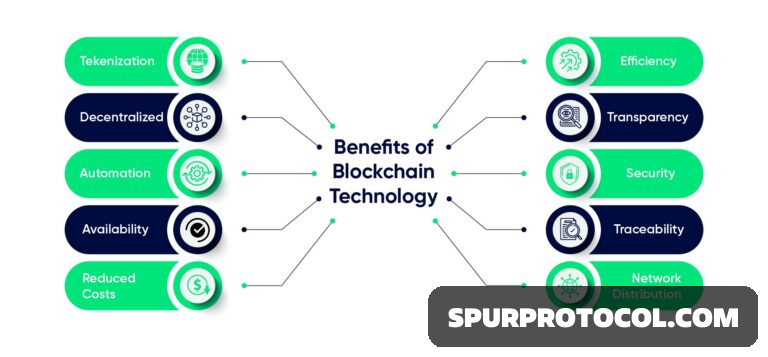What Is The Purpose Of Blockchain Technology?
Blockchain technology has been well-known throughout time in a variety of industries thanks to qualities like immutability, transparency, and security. Businesses and organizations started looking into its possible uses in fields including healthcare, elections, real estate, and more.
Go Back

🕒 7:15 PM
📅 Oct 16, 2025
✍️ By chrison2
To Facilitate Real Estate TransactionsBlockchain technology facilitates greater access to financial data and ownership in real estate transactions. Before, transferring and establishing ownership involved a lot of paperwork and other processes. Giving you a more convenient and safe way to transfer ownership can help you complete the transactions quickly and without any problem. In these transactions, blockchains enable the reduction of paperwork and other formalities.
Immutable and Transparent Record-Keeping
Blockchain technology aims to provide a secure, open, and unalterable platform for storing data and transactions as one of its key objectives. Banks and government databases are examples of traditional centralized systems that are vulnerable to manipulation, fraud, and unauthorized access. Blockchain offers a solution to this problem by creating a decentralized ledger that is scattered throughout a network of computers. The inability of a transaction to be altered or withdrawn after it has been added to the blockchain ensures the integrity of the data.
Enhanced Security
In the digital age, security is crucial, and blockchain technology provides a strong solution. Blockchain guarantees that data recorded on the ledger is secure and tamper-proof by using cutting-edge cryptographic techniques. A chain of blocks is formed by connecting each block of data to the one before it using a cryptographic hash. It is nearly impossible to compromise the system since any attempt to change the data in one block would require modifying every other block that follows it in the chain.
Decentralization and Lack of Trust
In centralized systems, trust is built between parties, and transactions are facilitated by intermediaries like banks. By enabling peer-to-peer transactions that are validated and recorded by the network itself, blockchain does away with the need for middlemen. Users can conduct transactions without having to have faith in a centralized authority because of this decentralization. Significant ramifications of this idea include changes to voting procedures, supply chain management, and the financial sector.
Smart Contracts
Self-executing contracts known as “smart contracts” have predetermined rules and conditions that are written on the blockchain. When the prerequisites are satisfied, they automatically go into effect, doing away with the need for middlemen and lowering the possibility of disagreements. Smart contracts are designed to simplify and automate a variety of procedures, including contracts, insurance claims, and payment settlements. This invention has the potential to save costs and save time across a variety of sectors.
Tokenization and Digital Assets
Blockchain technology enables the creation of digital tokens that represent ownership of real-world assets. This process, known as tokenization, has far-reaching implications for asset management and investment. Tokenized assets, such as real estate, stocks, and artwork, can be traded and divided into smaller fractions, making them more accessible to a broader range of investors.
Supply Chain Management
By offering an extensive and irrefutable record of a product’s path from its origin to the final user, blockchain can improve supply chain transparency. This aids in confirming the legitimacy of items, cutting down on fraud, and guaranteeing their quality and safety. Blockchain technology has the potential to revolutionize sectors like food, medicine, and luxury products.
Identity Verification and Privacy
Blockchain technology can enable secure and decentralized identity verification. Users have control over their personal information and can grant or revoke access as needed. This enhances privacy and reduces the risk of data breaches and identity theft.
